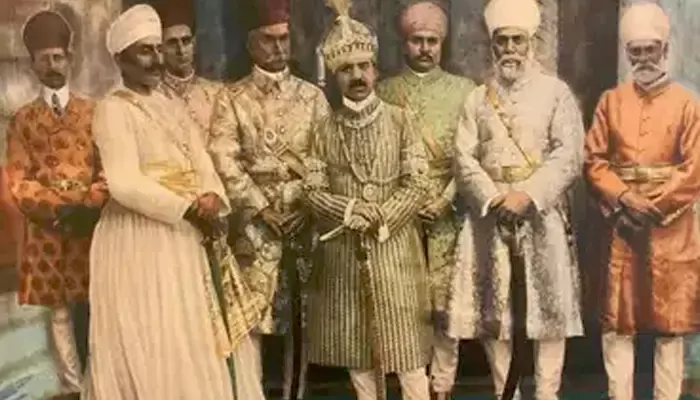
How India’s richest ruler quietly backed the nationalist cause while pledging loyalty to the British Raj
Mir Osman Ali Khan, the seventh Nizam of Hyderabad, was one of the richest men in the world during British rule. His kingdom was vast, powerful, and officially loyal to the Raj. The British showered him with medals, titles, and tributes. Hyderabad was often hailed as the “most faithful princely state.” But behind this image of loyalty was a carefully concealed agenda—a ruler who wore British honours while quietly supporting India’s freedom.
Though publicly aligned with the British, the Nizam is believed to have covertly aided the nationalist cause. Reports suggest he permitted trusted courtiers to channel funds towards India’s freedom movement. These contributions often passed through educational trusts, reform societies, and international advocacy. While no official record confirms direct funding, multiple accounts point to a pattern of strategic giving—supporting unity while avoiding British suspicion.
The Nizam didn’t stop at silent support. He sent his trusted envoy, Mir Nawaz Jung, to London with discreet instructions—his mission was to influence British opinion in favour of Hyderabad’s future autonomy after India’s independence. Lobbyists were hired. Pamphlets defending Hyderabad’s stand were circulated. Parliamentary debates were mysteriously aligned with the Nizam’s interests. Behind the scenes, a princely state was waging a diplomatic war in the heart of the empire.
Mir Osman Ali Khan also launched a series of reforms that served more than just progress. Education for women expanded. Restrictions on Muslim women’s public participation were relaxed. Noblewomen from Hyderabad began contributing to journalism, literature, and reform. These steps were not merely acts of modernisation—they were quiet investments in the idea of a future Indian society that was freer and more self-reliant.
As independence drew near, the Nizam’s double game grew bolder. Arms were smuggled into Hyderabad through Karachi. Retired British officers and pilots, including Sidney Cotton, were reportedly paid to airlift weapons. While the Indian subcontinent celebrated its freedom, Hyderabad prepared to stay out of the Union. This wasn’t defiance in the name of the British—but a desperate push to preserve princely independence.
In November 1947, the Nizam signed a Standstill Agreement with the Government of India. It was meant to delay Hyderabad’s merger. But during this pause, he doubled down—stockpiling arms and running a propaganda campaign. India eventually acted. In September 1948, Operation Polo was launched. Within five days, Hyderabad surrendered. The Nizam’s covert moves were exposed. His ambition to remain sovereign had collapsed.

Even after annexation, the Nizam's influence lingered. Decades later, his descendants won a legal case in London over £35 million in frozen funds—contested by India and Pakistan. This victory revealed the vast and tangled web of global financial links he had maintained. His story isn’t just one of lost power but of complex strategy. A monarch who funded both sides—loyalty and resistance—left more questions than answers behind.
The Nizam of Hyderabad walked a dangerous line between colonial favour and nationalist sympathy. He appeared as a royal ally to the Crown but secretly fed the roots of change. He ruled with absolute power yet encouraged education and reform. His gambit to keep Hyderabad independent ultimately failed—but his legacy remains layered and debated. A man of wealth, secrecy, and political theatre, he tried to script his ending to India’s freedom saga—not the one history chose.